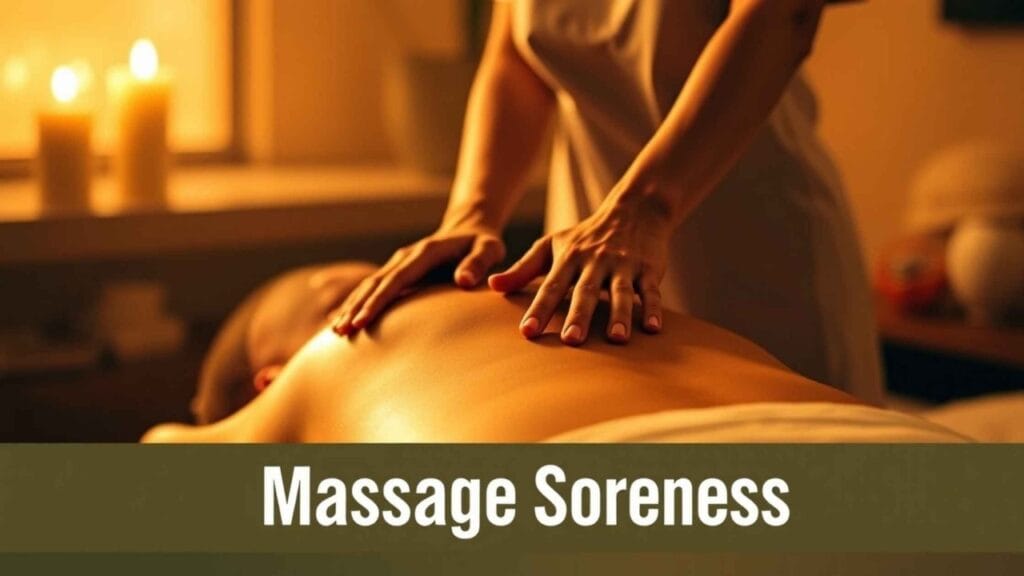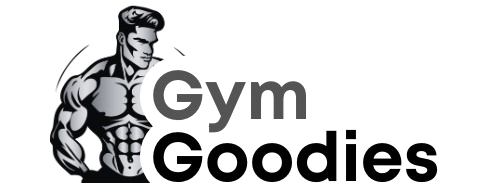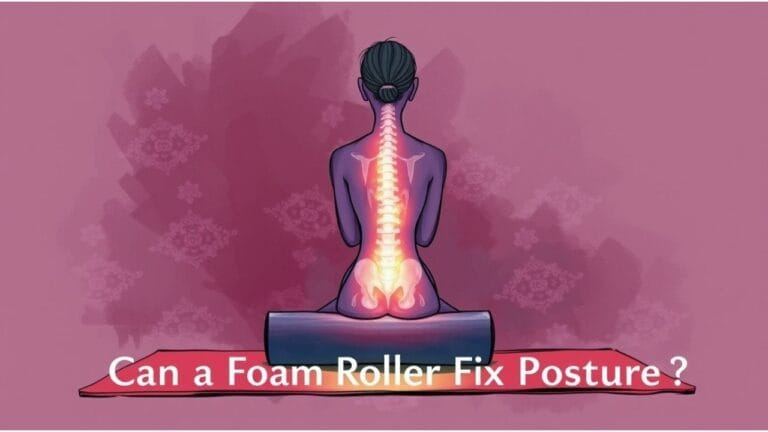Massage Soreness: When to Worry and When It’s Totally Normal

Ever walked out of a massage feeling like you’ve been hit by a truck? You’re not alone. That deep-tissue session that was supposed to leave you relaxed now has you wincing every time you move.
But here’s the good news: Some soreness after a massage is completely normal, and even a sign it’s working. The trick is knowing when it’s part of the healing process and when it might signal something more serious. Let’s break it down.
Related: Muscles Used for Sitting and Standing: How to Keep Them Strong
“Why Am I So Sore After a Massage?” Here’s What’s Really Happening
Short answer: Your muscles are releasing built-up tension and toxins, which can cause temporary discomfort.
Most people assume massage should always feel like pure bliss, but deep work on tight muscles can leave you feeling tender afterward. Think of it like a workout, when you challenge your muscles, they need time to recover.(HEALTHLINE)
Myth vs. Reality
- Myth: No pain means the massage wasn’t effective.
- Reality: Pain isn’t the goal, therapeutic pressure is. A 2023 study in the Journal of Bodywork and Movement Therapies found that moderate pressure (not extreme pain) yields the best results for reducing muscle stiffness.
Client Case Study: Sofia’s “Hurts So Good” Moment
Sofia came to me convinced her post-massage soreness meant her therapist had gone too hard. But after tracking her recovery, we realized her DOMS (Delayed Onset Muscle Soreness) peaked at 24–48 hours, just like after a good workout. By day three, she felt lighter and more mobile than she had in years.
Key Takeaway: Mild to moderate soreness (like after exercise) is normal. Severe or sharp pain is not.
The Hidden Factor Everyone Overlooks: Hydration
Counterintuitive insight: Drinking water before your massage matters just as much as after.
A 2024 study in the International Journal of Therapeutic Massage found that dehydrated muscles are more prone to post-massage soreness and cramping. When your tissues are dry, they don’t flush out metabolic waste (like lactic acid) as efficiently.
Actionable Tip: The 2-Minute Hydration Test
- Check your urine color before your session. Pale yellow = good. Dark = drink more water.
- Sip 16 oz of water before your massage, not just after.
Pro Tip: Add electrolytes if you’re prone to cramping, coconut water or a pinch of sea salt in your water helps.
“No Pain, No Gain” Debunked: Why Pushing Too Hard Backfires
Myth: “The more it hurts, the better it works.”
This isn’t just wrong, it’s risky. A 2025 meta-analysis in Pain Research & Management showed that excessive pressure can cause micro-tears in muscle fibers, prolonging recovery.
Traditional vs. Updated Advice
- Old School: “Grind into those knots!”
- New School: “Let the nervous system relax first.” (Gentle warm-up techniques like myofascial release often work better long-term.)
Visual Cue: Imagine your muscles like a rubber band. Yank it suddenly, and it might snap. Warm it up slowly, and it becomes flexible.
Step-by-Step Fix: Reduce Soreness in 24–72 Hours
Follow this sequence to recover faster and avoid unnecessary pain.
Phase 1: Right After Your Massage (0–2 Hours)
- Do: Hydrate, walk gently, apply heat (not ice!) to relax muscles.
- Avoid: Strenuous activity or alcohol (dehydrates you further).
Phase 2: Next-Day Recovery (24–48 Hours)
- Do: Light stretching, Epsom salt baths, or a gentle self-massage with a foam roller.
- Avoid: Deep pressure, let your muscles heal.
Phase 3: Long-Term Prevention
- Schedule regular massages (every 2–4 weeks) to prevent extreme tension buildup.
- Communicate with your therapist. Phrases like “This is my sweet spot” or “A little lighter, please” help them adjust.
When to Worry: Red Flags You Shouldn’t Ignore
While most soreness is normal, these signs warrant a doctor’s visit:
Bruising that doesn’t fade in 3–4 days (could indicate excessive trauma).
Sharp, shooting pain (nerve irritation).
Swelling or heat in the area (possible inflammation or infection).
Expert Insight: Dr. Lisa Thompson, a sports medicine specialist, notes in a 2024 Harvard Health article: “Post-massage soreness should feel like muscle fatigue, not injury. Listen to your body’s signals.”
Your Body Knows Best
Massage is a powerful tool, but like any therapy, it requires balance. Mild soreness? Normal. Excruciating pain? Not okay.
Next time you book a session, remember:
- Hydrate before and after.
- Speak up about pressure preferences.
- Move gently post-massage to aid recovery.
By tuning into your body’s signals, you’ll get all the benefits of massage, without the unnecessary agony.Now I’d love to hear from you: Have you ever had a massage that left you too sore? What helped you recover? Drop your story in the comments!
Disclaimer:
It should be remembered that the information available at gymgoodies.net is constantly evolving and is up-to-date and authentic information on fitness, exercises, and health.
I am a veteran bodybuilder, considering I have been active in the industry for quite some time. I ensure that the content shared reflects the lessons I have learned in my years of training and working or all the exposure I have had.
That said, it must be understood that the information available on this portal is obtained through communication channels and is primarily for education and information. Some factors and changes occur, and the issues discussed in this website address such things.
Every piece of advice regarding fitness or health should be taken with caution.
You might need the assistance of fitness professionals, nutritionists, or doctors regarding your workout routine, diet, or fitness activity. Their advice should be personalized PPC, the guide you integrate into your routine, taking into account your specifications and requirements regarding your health and fitness.
This is key, considering our concern is your health and safety. Make sure you only use the data on the site to empower expert advice and nothing more.



